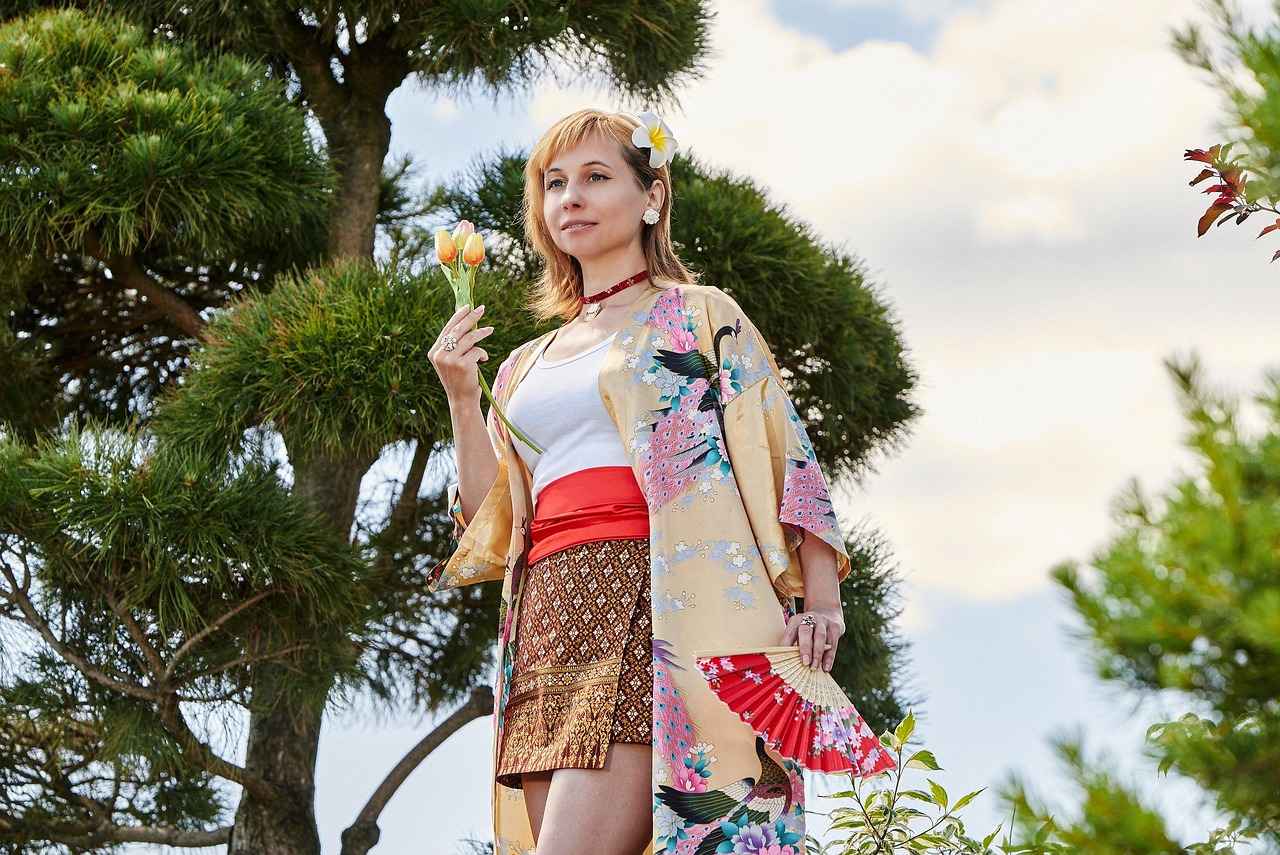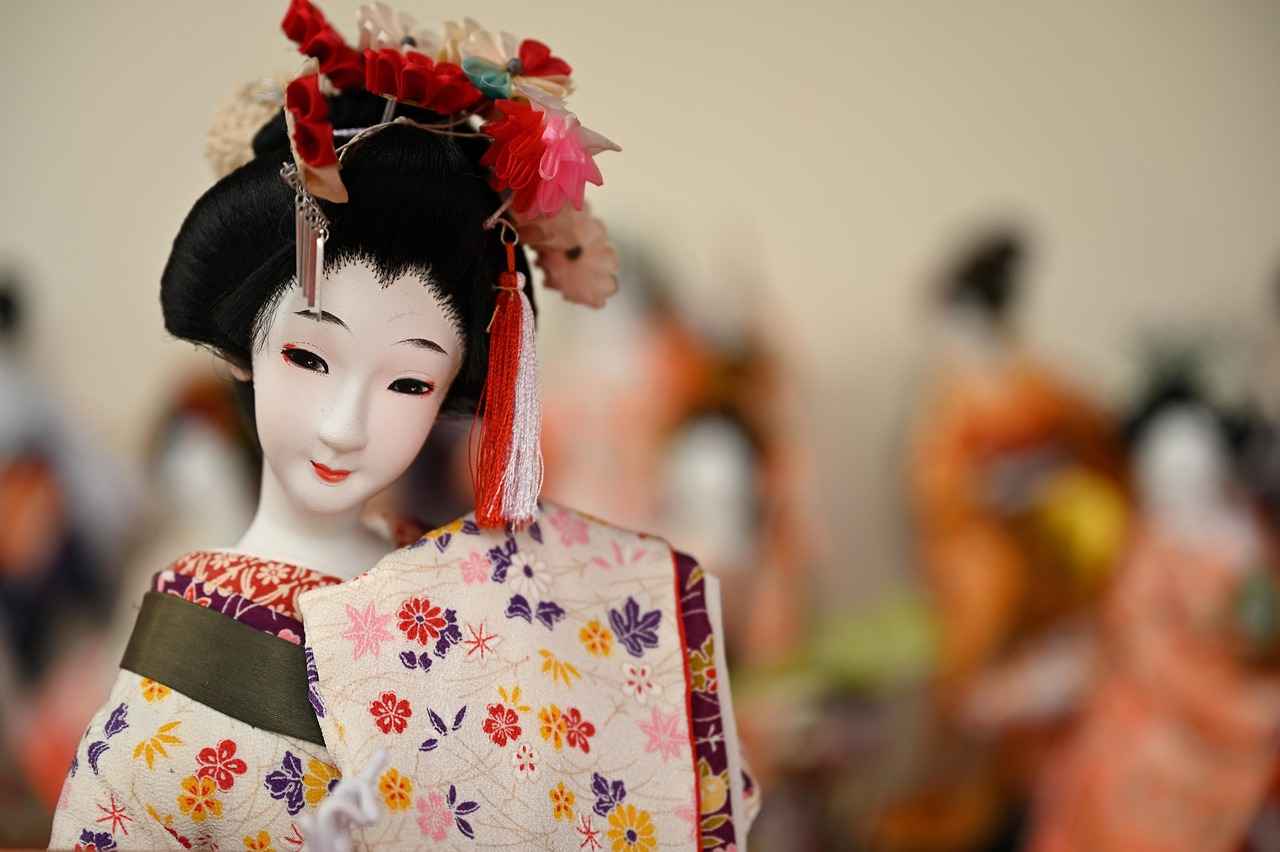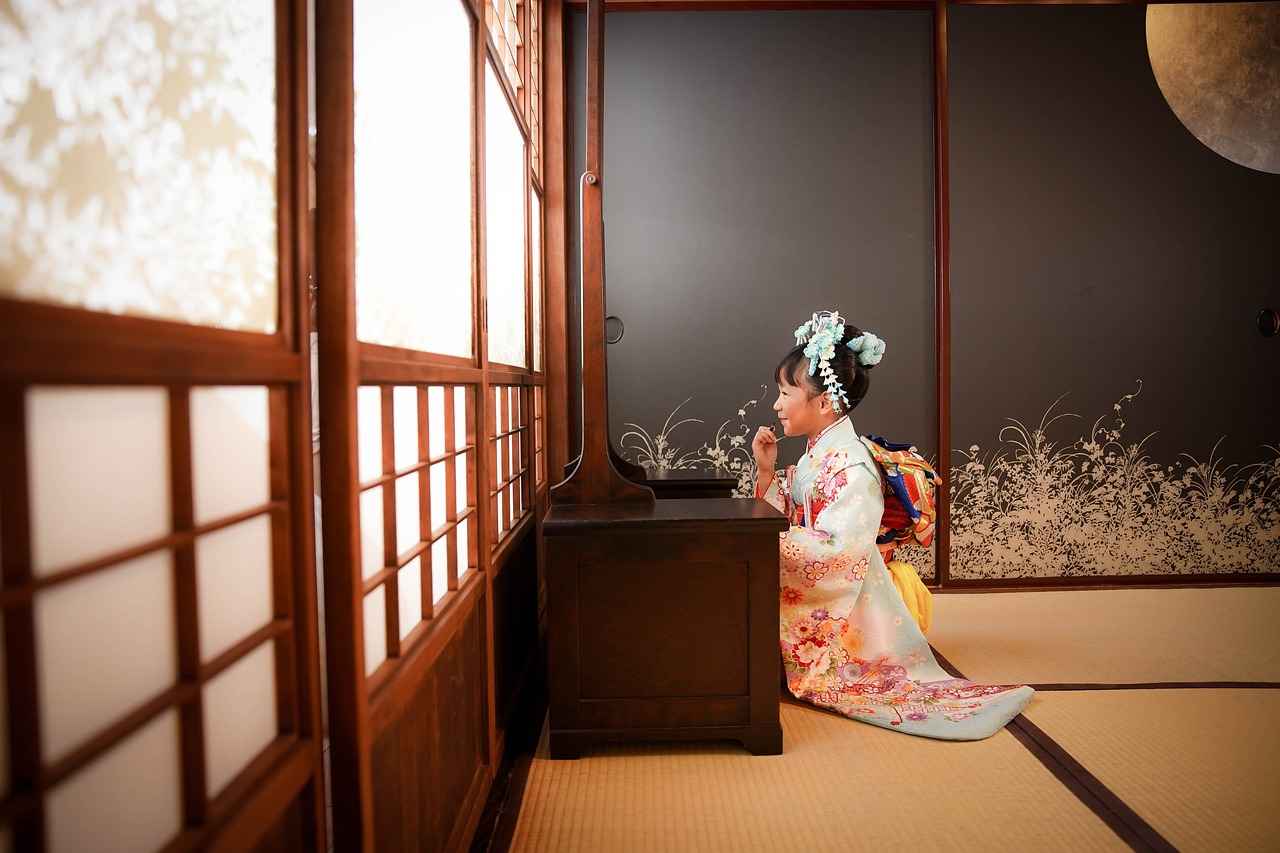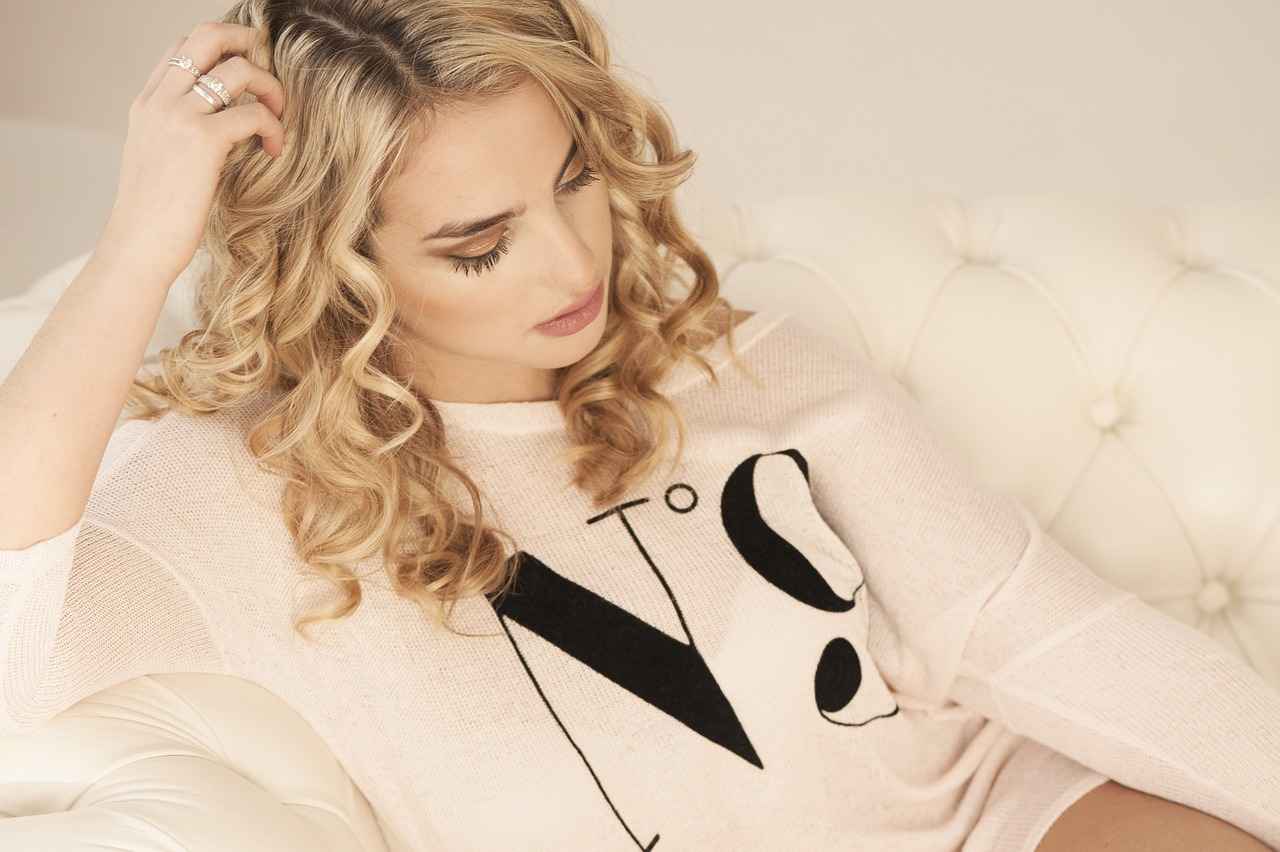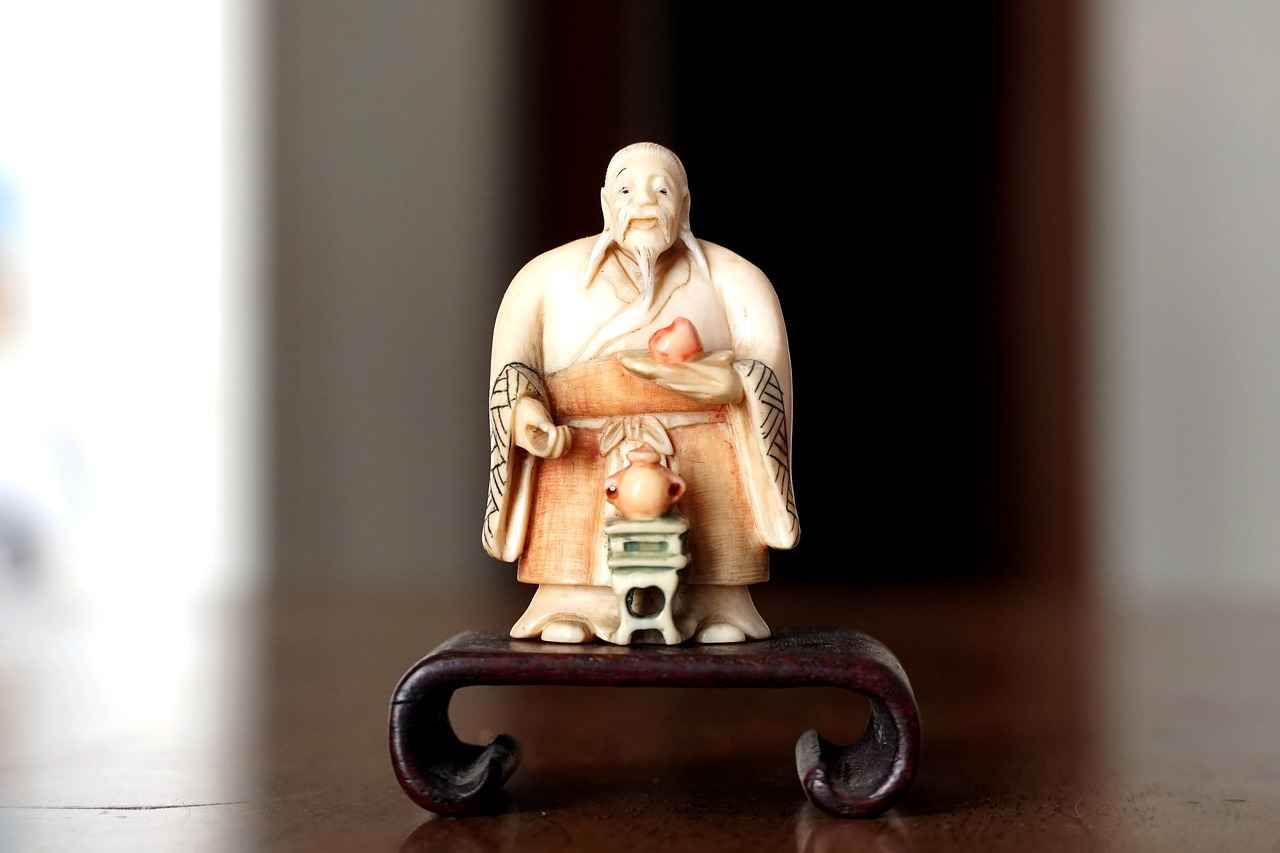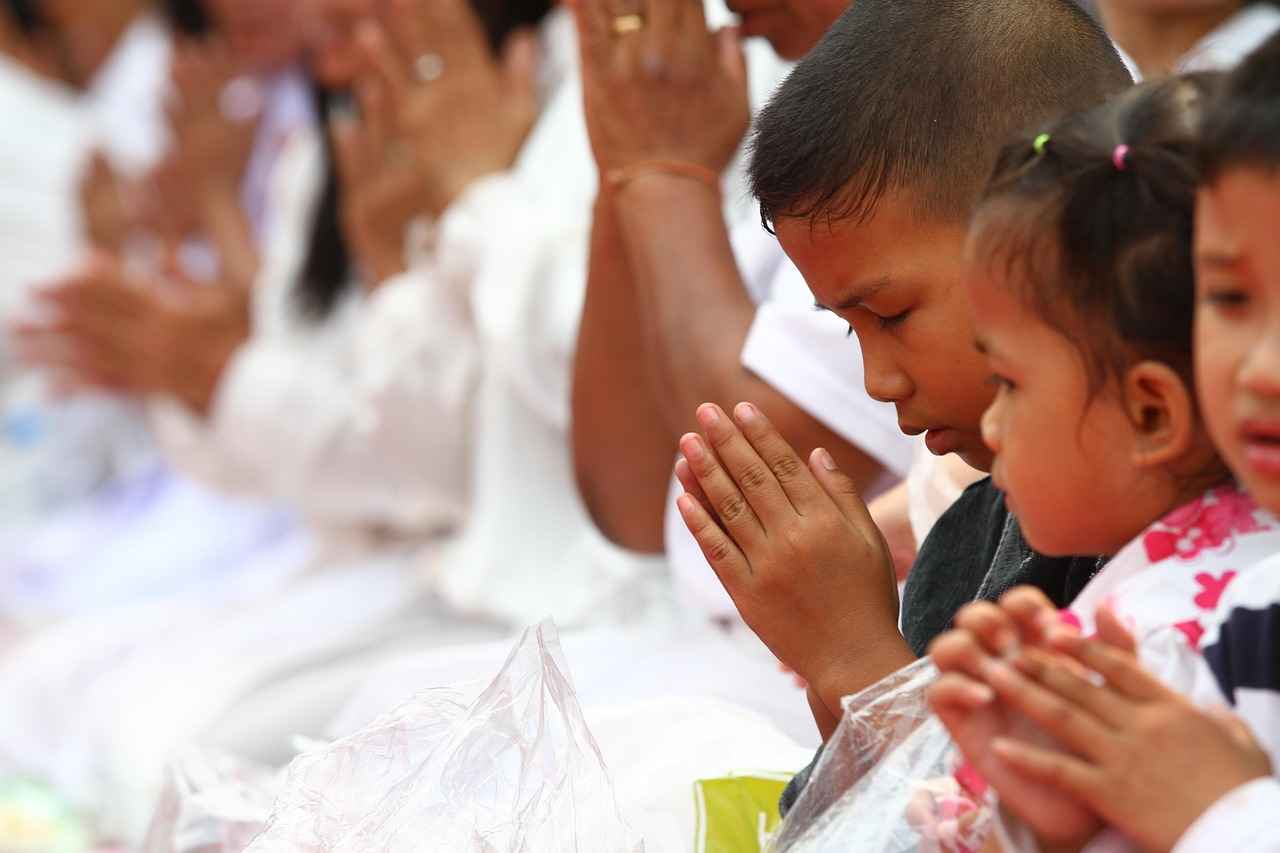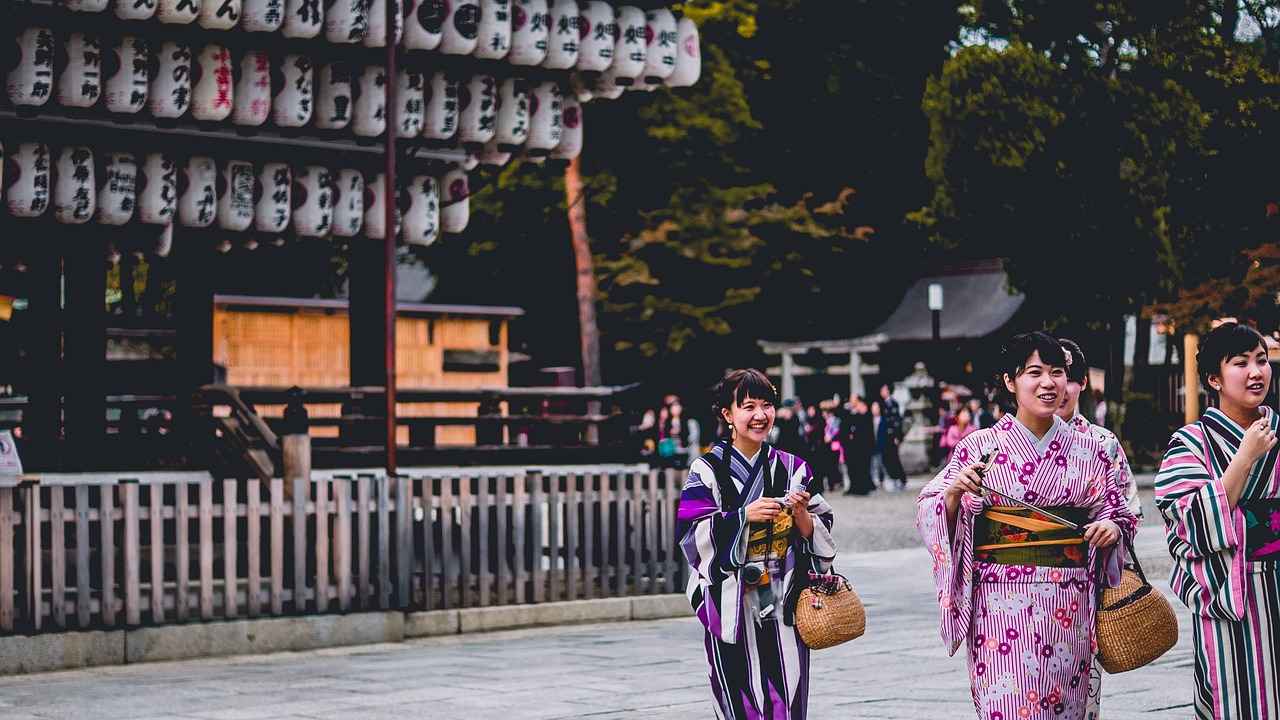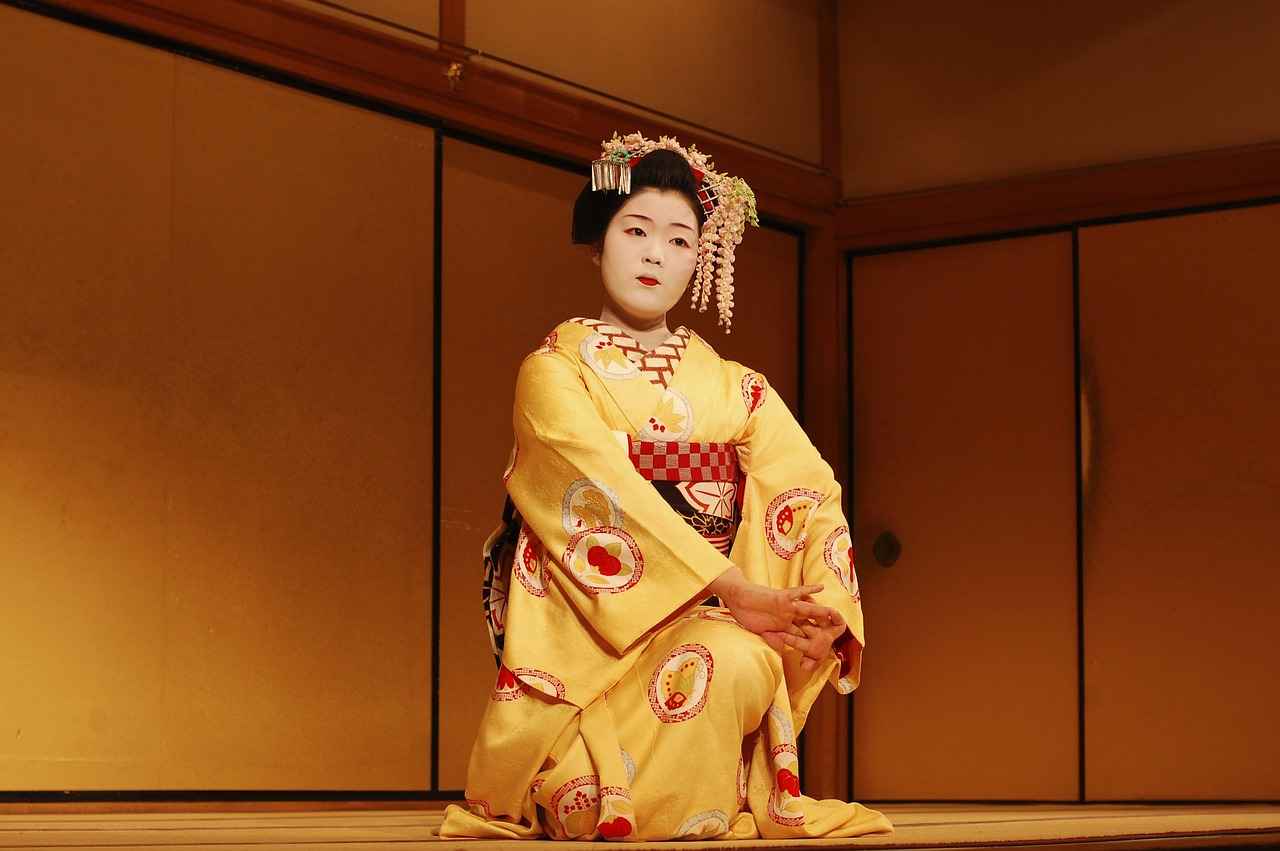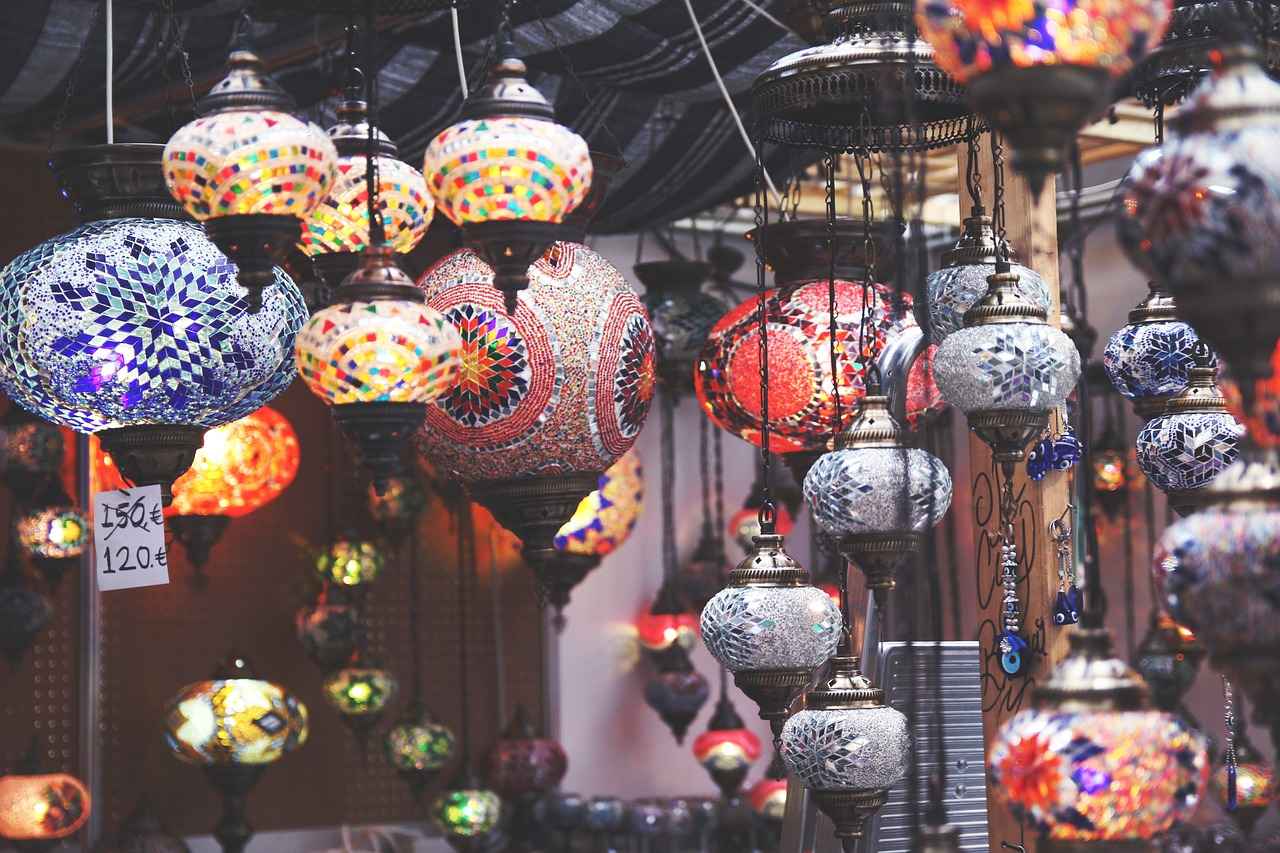This article delves into the art of wearing a kimono in Kyoto, offering a blend of style tips, cultural insights, and practical advice to ensure you look fabulous while respecting this rich tradition.
Understanding the Kimono
The kimono is more than just clothing; it is a symbol of Japanese culture with a history that spans centuries. Originally worn by all classes, the kimono has evolved into various styles, each with its unique significance and occasion. Understanding these styles is essential for making the right choice for your trip.
Choosing the Right Fabric
When selecting a kimono, the fabric plays a crucial role in both comfort and aesthetics. Here are some common options:
- Silk: Known for its luxurious feel, silk kimonos are often reserved for special occasions.
- Cotton: More casual and breathable, cotton kimonos are perfect for daily wear.
- Synthetic: These are affordable and easy to maintain, suitable for various occasions.
Choosing the Right Style
Different styles cater to different occasions:
- Furisode: With long sleeves, this style is typically worn by young women during formal events.
- Tomesode: A more subdued option for married women, ideal for weddings and formal gatherings.
- Yukata: A casual summer kimono, perfect for festivals and informal outings.
Accessorizing Your Kimono
To complete your look, consider these essential accessories:
- Obi: The belt that cinches the kimono, available in various styles and widths.
- Footwear: Traditional options like zori and geta provide both style and comfort.
Understanding Kimono Etiquette
Wearing a kimono comes with its own set of etiquette. Be sure to:
- Respect the traditions associated with kimono wearing.
- Avoid wearing shoes indoors and keep your kimono clean.
Conclusion: Embrace the Kimono Experience
Wearing a kimono in Kyoto is a unique opportunity to engage with Japanese culture. By understanding the styles, fabrics, and etiquette, you can fully embrace this beautiful tradition and create lasting memories during your visit.
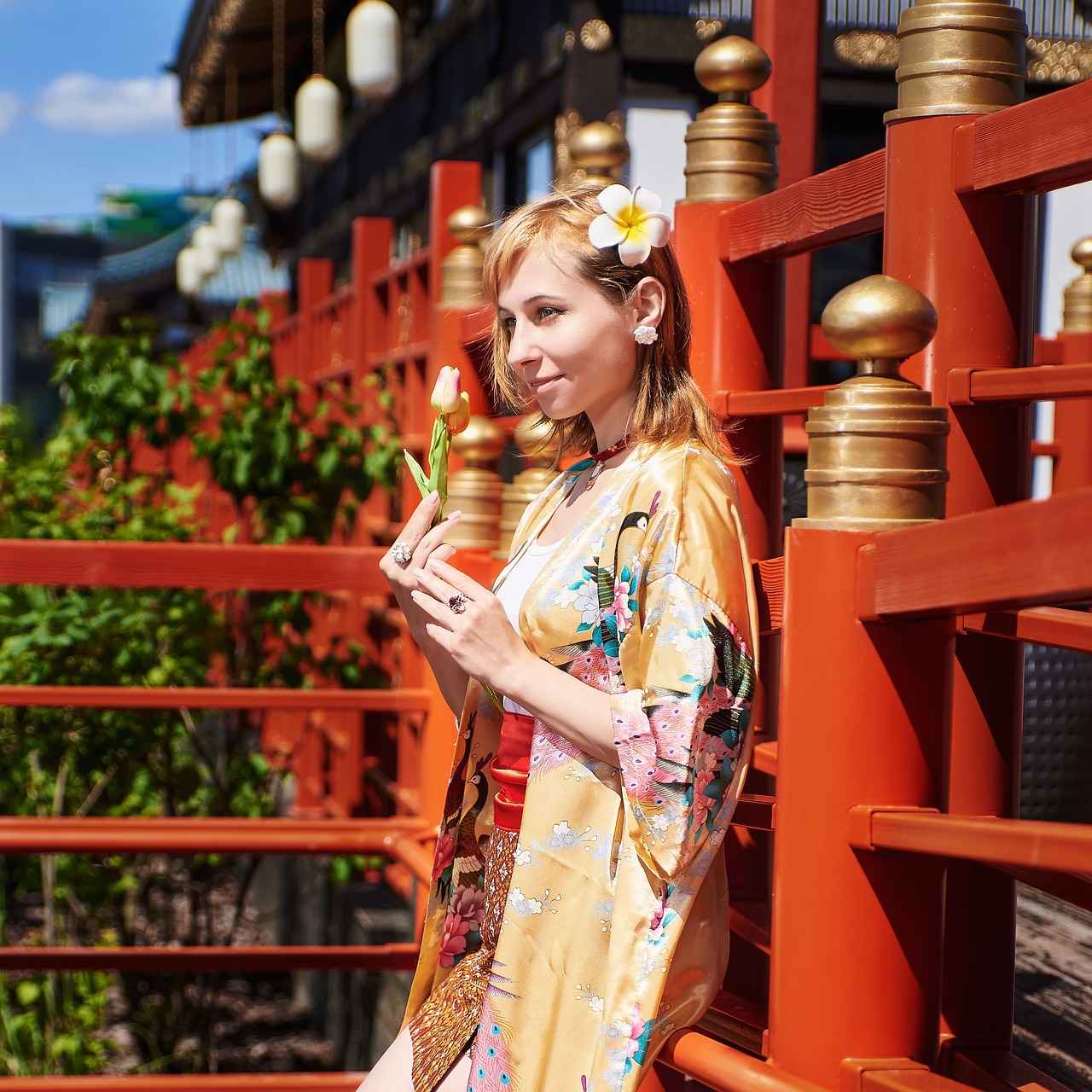
Understanding the Kimono
The kimono is a traditional garment that holds a significant place in Japanese culture, representing not only fashion but also a deep-rooted history and artistry. The term “kimono” translates to “thing to wear,” and its evolution over the centuries reflects the changing social and cultural landscape of Japan.
Originally worn by the aristocracy, the kimono has transformed through various historical periods, from the Heian era (794-1185) when it was characterized by elaborate designs and rich colors, to the more simplified styles seen today. Each kimono tells a story, often reflecting the wearer’s age, marital status, and the season.
| Type of Kimono | Characteristics | Occasions |
|---|---|---|
| Furisode | Long sleeves, vibrant colors | Worn by unmarried women, often at coming-of-age ceremonies |
| Tomesode | Shorter sleeves, elegant patterns | Typically worn by married women at formal events |
| Yukata | Casual cotton fabric | Worn during summer festivals and at home |
Today, the kimono comes in various styles and fabrics, including silk, cotton, and synthetic materials, each serving different purposes and occasions. The vibrant colors and intricate patterns often signify specific meanings, such as luck, prosperity, or seasonal changes.
In modern times, the kimono has also adapted to contemporary fashion trends, with designers experimenting with styles that blend traditional elements with modern aesthetics. This evolution ensures that the kimono remains relevant and appreciated, not just as a cultural artifact but as a dynamic part of Japan’s fashion scene.
Understanding the kimono is essential for anyone looking to appreciate its beauty and significance in Japanese culture. Whether worn for special occasions or as a daily garment, the kimono continues to symbolize elegance and tradition.
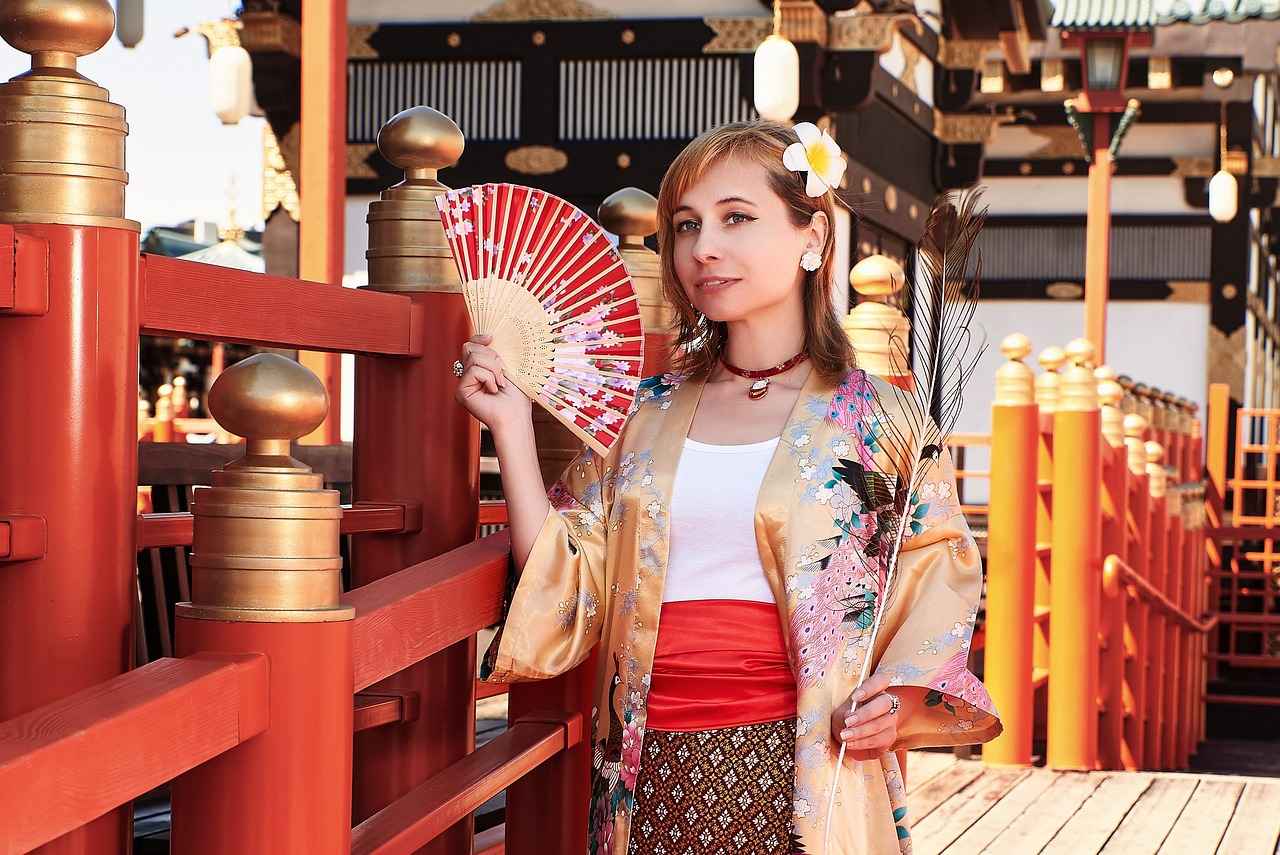
Choosing the Right Fabric
When it comes to kimono-making, the choice of fabric plays a crucial role in determining both the comfort and style of the garment. Different fabrics not only influence the overall aesthetic but also affect how the kimono feels when worn. Let’s explore the most common materials used in kimono production: silk, cotton, and synthetic options.
Silk Kimonos
Silk is often regarded as the luxurious choice for kimonos. Known for its soft texture and elegance, silk kimonos are typically reserved for special occasions such as weddings and formal ceremonies. The natural sheen of silk adds a touch of sophistication and enhances the visual appeal of intricate designs and colors.
Cotton Kimonos
In contrast, cotton kimonos are more casual and comfortable, making them ideal for everyday wear. They are breathable, lightweight, and easy to care for, which makes them a popular choice for summer festivals and informal gatherings. Cotton kimonos often feature vibrant patterns and are suitable for various occasions, allowing wearers to express their personal style.
Synthetic Fabrics
With advancements in textile technology, synthetic fabrics have emerged as a practical alternative. These materials can mimic the look and feel of natural fibers while offering enhanced durability and affordability. Synthetic kimonos are often easier to clean and maintain, making them a convenient option for those who want to enjoy the beauty of a kimono without the high maintenance.
Ultimately, the choice of fabric depends on personal preference, the occasion, and the desired level of comfort. Understanding the unique qualities of each fabric type can help you make an informed decision when selecting the perfect kimono for your next outing.
Silk Kimonos
are a symbol of elegance and tradition in Japanese culture, renowned for their luxurious feel and stunning designs. Often reserved for special occasions, these garments embody a rich history that dates back centuries. Their unique qualities make them a popular choice among those looking to embrace the beauty of Japanese attire.
One of the most remarkable aspects of silk kimonos is the fabric itself. Silk is celebrated for its softness, sheen, and ability to drape beautifully over the body. The breathability of silk ensures comfort, making it suitable for various seasons. Additionally, the vibrant colors and intricate patterns often found on silk kimonos highlight the artistry involved in their creation, making each piece a work of art.
Silk kimonos are often adorned with traditional motifs that carry cultural significance. These designs can represent nature, seasons, or even family heritage, allowing the wearer to express their personal story. As a result, silk kimonos are not just clothing; they are a means of cultural expression and identity.
Another reason for the popularity of silk kimonos is their versatility. While they are commonly worn during formal events such as weddings, tea ceremonies, and festivals, they can also be styled for less formal gatherings. Pairing a silk kimono with modern accessories can create a unique fusion look that respects tradition while embracing contemporary fashion.
In conclusion, silk kimonos are more than just luxurious garments; they are a celebration of Japanese culture and artistry. Whether you’re attending a special event or simply wish to appreciate the elegance of this traditional attire, a silk kimono is a beautiful choice that embodies both heritage and style.
Care Tips for Silk
Silk kimonos are not only a symbol of elegance but also a delicate garment that requires proper care to maintain their beauty and longevity. Here are some essential tips to ensure your silk kimono remains in pristine condition:
- Gentle Cleaning: Always opt for hand washing your silk kimono in cold water with a mild detergent specifically designed for silk. Avoid wringing or twisting the fabric to prevent damage.
- Drying: After washing, lay the kimono flat on a clean, dry towel and roll it up to absorb excess water. Never hang it to dry, as this can cause stretching and misshaping.
- Ironing: If your kimono has wrinkles, use a low-heat setting on your iron. Place a thin cloth between the iron and the silk to avoid direct contact, which can scorch the fabric.
- Storage: Store your silk kimono in a cool, dry place away from direct sunlight. Use a breathable garment bag to protect it from dust and pests. Avoid plastic bags, as they can trap moisture and lead to mildew.
- Regular Inspection: Periodically check your silk kimono for any signs of wear or damage. Address any issues promptly to prevent further deterioration.
By following these care tips, you can ensure that your silk kimono remains a cherished piece of your wardrobe for years to come. Remember, proper care not only preserves the beauty of your kimono but also honors the rich tradition behind this exquisite garment.
When to Wear Silk
Understanding the occasions suitable for silk kimonos can significantly enhance your overall experience and appreciation of this exquisite garment. Silk, known for its luxurious texture and graceful drape, is traditionally favored for various significant events in Japanese culture. Here, we explore some of the key occasions where wearing a silk kimono is not only appropriate but also highly recommended.
- Weddings: Silk kimonos are a popular choice for weddings, particularly for the bride and female guests. The elegance of silk complements the joyous atmosphere of the celebration.
- Tea Ceremonies: Participating in a traditional tea ceremony often calls for a silk kimono. The refined nature of the event is matched perfectly by the sophistication of silk.
- Festivals: During cultural festivals, wearing a silk kimono can enhance your experience. Events like Hanami (cherry blossom viewing) or Tanabata (star festival) are ideal opportunities to showcase this beautiful attire.
- Formal Gatherings: Silk kimonos are suitable for formal gatherings, such as business receptions or cultural presentations. They convey respect and appreciation for Japanese traditions.
- Graduations and Celebrations: Special milestones like graduations or anniversaries are perfect occasions to wear a silk kimono, celebrating achievements in style.
In addition to these events, silk kimonos can also be worn during family gatherings and other significant celebrations, making them a versatile choice for various occasions. The luxurious nature of silk not only enhances your appearance but also allows you to connect with the rich cultural heritage of Japan.
Ultimately, wearing a silk kimono is about more than just fashion; it’s a way to honor tradition and immerse oneself in the beauty of Japanese culture. By choosing the right occasion, you can truly appreciate the elegance and significance of this timeless garment.
Cotton Kimonos
are a versatile and comfortable choice, making them ideal for everyday wear. Unlike their silk counterparts, cotton kimonos offer a more relaxed fit and are perfect for casual outings, festivals, or even lounging at home. Their lightweight and breathable fabric ensures comfort, especially during warmer months.
When it comes to styling cotton kimonos, the possibilities are endless. Here are some tips to help you elevate your look:
- Layering: Pair your cotton kimono with a simple tank top or a fitted tee. This creates a stylish contrast and allows the kimono to be the focal point of your outfit.
- Bottoms: Opt for denim shorts, skinny jeans, or even a casual skirt. The flowy nature of the kimono complements fitted bottoms beautifully.
- Footwear: Choose comfortable sandals or sneakers for a relaxed vibe, or dress it up with ankle boots for a more polished look.
- Accessorizing: Add a statement belt to cinch your waist and create a more defined silhouette. Layer delicate jewelry for a touch of elegance.
Moreover, cotton kimonos can easily transition from day to night. For a casual day out, wear it over a simple outfit. To dress it up for an evening event, swap your casual accessories for bolder pieces and add a pair of heels.
As you style your cotton kimono, remember to embrace its cultural roots. While it is essential to express your personal style, understanding the history and significance of the kimono will enhance your appreciation for this beautiful garment.
In summary, cotton kimonos are not only comfortable but also incredibly stylish. With the right pairing and accessories, you can create a variety of looks suitable for any occasion. Embrace the versatility of cotton kimonos and enjoy the blend of tradition and modern fashion.

Choosing the Right Style
When it comes to wearing a kimono, selecting the right style is essential to ensure that you not only look great but also feel comfortable and appropriate for the occasion. In this section, we will explore some of the most popular kimono styles, including the furisode, tomesode, and yukata. Each of these styles has its own unique characteristics and cultural significance.
- Furisode: This style is characterized by its long, flowing sleeves and is traditionally worn by unmarried women. The furisode is often adorned with vibrant colors and intricate patterns, making it a popular choice for formal occasions such as weddings and coming-of-age ceremonies. When styling a furisode, consider pairing it with a beautifully tied obi to enhance its elegance.
- Tomesode: Unlike the furisode, tomesode kimonos are typically worn by married women. They feature shorter sleeves and are often designed with more subdued colors. Tomesode are ideal for formal events, including family gatherings and ceremonies. The designs often include motifs that symbolize good fortune and happiness, making them a meaningful choice for significant life events.
- Yukata: The yukata is a casual summer kimono made of lightweight cotton, perfect for warm weather. It is often worn at festivals and fireworks displays. The yukata is easy to wear and comes in various colors and patterns, allowing for personal expression. Pair it with traditional footwear like geta for a complete look.
When choosing the right kimono style, consider the occasion, your personal style, and the cultural significance of each type. By understanding these elements, you can select a kimono that not only looks stunning but also resonates with the rich traditions of Japanese culture.
Furisode: The Formal Choice
Furisode kimonos are a stunning representation of Japanese culture and fashion, characterized by their exceptionally long sleeves. Traditionally worn by young, unmarried women, these kimonos serve as a symbol of youth and elegance. The word “furisode” translates to “swinging sleeves,” which is a nod to the dramatic movement and flow of the garment.
These kimonos are often adorned with vibrant colors and intricate patterns, making them a popular choice for significant life events such as graduations, weddings, and coming-of-age ceremonies. The designs can vary widely, with floral motifs and seasonal themes being particularly common, reflecting the beauty of nature and the changing seasons in Japan.
When it comes to styling a furisode, there are several important tips to keep in mind:
- Choose the Right Obi: The obi, or sash, is essential for completing the look. A wide obi is typically worn with furisode, and it should complement the colors and patterns of the kimono.
- Footwear Matters: Traditional footwear like geta or zori should be selected carefully to match the kimono’s style. Ensure they are comfortable, especially if you plan to walk around.
- Accessorize Wisely: Incorporate accessories like kanzashi (hair ornaments) and obijime (decorative cords) to enhance the overall appearance without overwhelming the outfit.
Understanding the significance of the furisode goes beyond aesthetics; it embodies cultural heritage and tradition. Wearing a furisode is a way to honor Japanese customs while also expressing personal style. For those planning to wear a furisode, it is essential to embrace its beauty and the cultural stories it tells.
In conclusion, the furisode kimono is not just a garment; it is a celebration of youth, femininity, and tradition. By paying attention to styling details and understanding its cultural significance, you can fully appreciate the elegance of this formal choice.
Tomesode: The Elegant Option
Tomesode kimonos hold a special place in the heart of Japanese fashion, particularly for married women. These elegant garments exemplify both sophistication and tradition, making them a popular choice for significant life events and celebrations.
Characterized by their subtle yet intricate designs, tomesode kimonos often feature beautiful patterns that are typically concentrated at the hem, allowing for a graceful presentation when worn. The color palette of these kimonos tends to be more muted compared to other styles, which enhances their elegance and suitability for formal occasions.
| Occasion | Details |
|---|---|
| Weddings | Tomesode kimonos are often worn by married women attending weddings, showcasing their status and respect for the occasion. |
| Formal Celebrations | These kimonos are perfect for formal gatherings, such as tea ceremonies and family celebrations. |
| Seasonal Festivals | During seasonal events like Hanami (flower viewing), tomesode kimonos add a touch of elegance to the festivities. |
When selecting a tomesode, the fabric plays a crucial role in determining its overall look and feel. Luxurious materials like silk are often favored for their exquisite drape and sheen, while cotton options provide comfort for casual settings. Accessories such as a beautifully tied obi and traditional footwear like geta or zori further enhance the overall aesthetic.
In conclusion, tomesode kimonos are not just garments; they are a reflection of cultural heritage and personal elegance. Wearing one allows married women to celebrate significant moments in their lives while honoring the rich traditions of Japan.
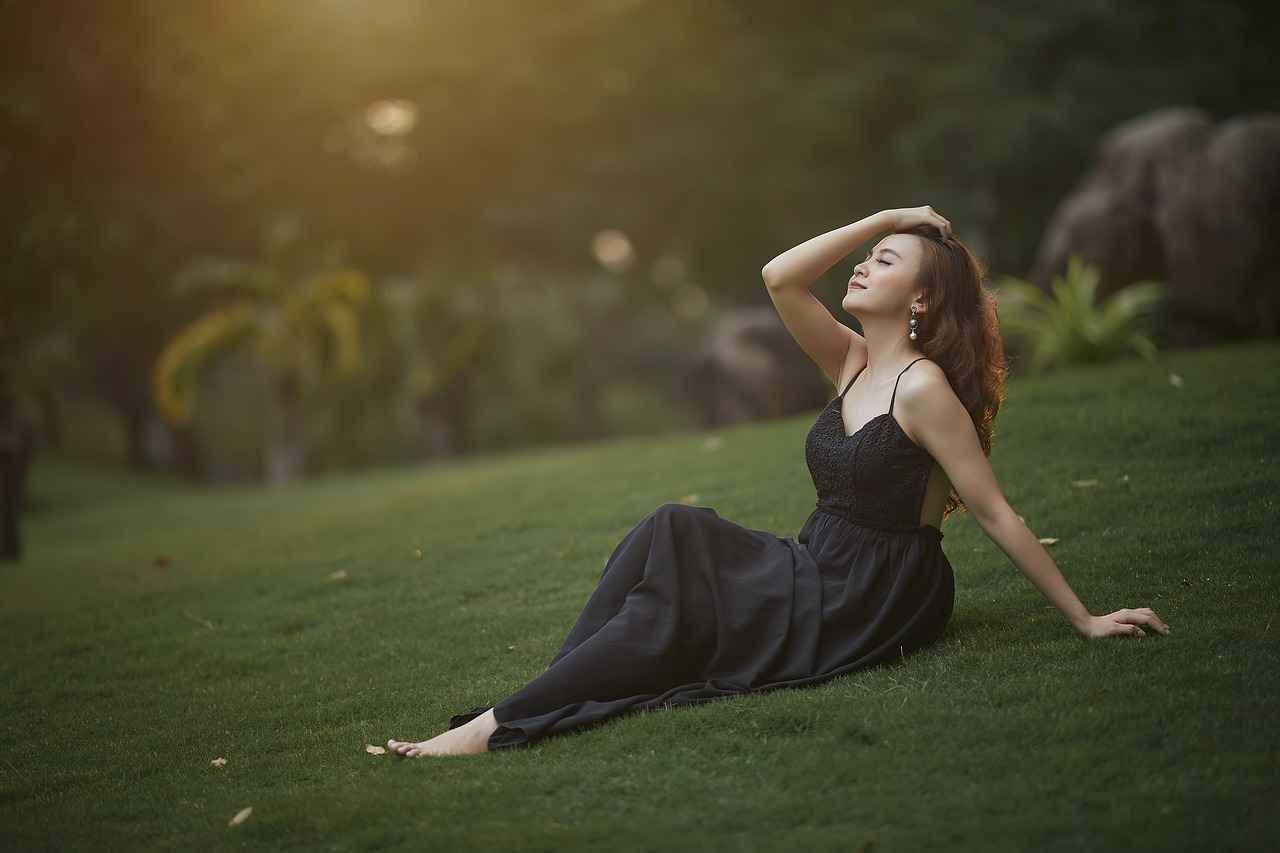
Accessorizing Your Kimono
is essential for achieving a complete and polished look. The right accessories not only enhance your outfit but also reflect your personal style and cultural appreciation. In this section, we will explore the must-have accessories that can elevate your kimono ensemble, ensuring you stand out while honoring tradition.
- Obi: The Essential Belt
The obi is arguably the most important accessory when it comes to styling a kimono. This wide belt comes in various styles, colors, and patterns, allowing you to express your individuality. A well-tied obi can transform your look from simple to stunning. Learn various tying techniques, such as the taiko and nageshi, to create different visual effects.
- Footwear Choices
Choosing the right footwear is crucial for both comfort and style. Traditional options include zori and geta. Zori are flat sandals that offer a modern touch, while geta, with their elevated wooden soles, provide a classic aesthetic. Consider the occasion when selecting your footwear to ensure harmony with your kimono.
- Haneri: The Collar Accessory
The haneri is an optional collar that adds a splash of color or pattern to your kimono. It can be a great way to incorporate contrasting colors or designs, making your outfit more dynamic. Choose a haneri that complements your kimono’s colors for a cohesive look.
- Obijime: The Decorative Cord
The obijime is a decorative cord that is tied around the obi. This accessory adds a layer of detail and can be chosen to match or contrast with your kimono and obi. It’s a subtle yet impactful way to elevate your overall appearance.
- Accessories for Hair and Makeup
Don’t forget about your hair and makeup! Traditional hairpieces, known as kanzashi, can add elegance to your hairstyle. For makeup, consider a natural look that complements your kimono’s colors, enhancing your features without overpowering the outfit.
In conclusion, is a vital step in completing your traditional look. By thoughtfully selecting each piece, you can create a stunning ensemble that showcases your style while respecting the rich heritage of Japanese culture. Embrace the art of accessorizing and make your kimono experience unforgettable.
Obi: The Essential Belt
The obi is an essential component of kimono styling, serving not just as a functional belt but also as a significant fashion statement. Understanding the various obi styles and mastering the art of tying them can elevate your kimono ensemble to new heights. In this section, we will delve into the different types of obi, their cultural significance, and the techniques to tie them effectively.
| Type of Obi | Description | Occasions |
|---|---|---|
| Fukuro Obi | A formal, wide obi often made of luxurious fabrics. | Weddings, formal ceremonies |
| Haneri Obi | A shorter obi that is typically used for casual wear. | Everyday wear, festivals |
| Nagoya Obi | A versatile obi that is half-width and easy to tie. | Casual and semi-formal occasions |
Each type of obi has its unique characteristics and is suited for different occasions. For instance, the Fukuro Obi is often adorned with intricate designs and is reserved for formal events, while the Haneri Obi is more suitable for casual outings.
When it comes to tying the obi, there are several techniques to choose from. The most common method is the taiko musubi, which creates a drum-shaped knot that sits at the back. This style is not only aesthetically pleasing but also provides a secure fit. For a more casual look, the kake musubi is a simpler knot that can be tied quickly and easily.
To tie your obi effectively, follow these steps:
- Wrap the obi around your waist, ensuring it sits comfortably.
- Cross the ends at the back and bring them to the front.
- Form the desired knot, adjusting for tightness and position.
- Secure the knot with an obi-dome or obi-ita for added support.
In conclusion, the obi is not merely an accessory but a vital element of kimono fashion that reflects personal style and cultural heritage. By mastering different styles and tying techniques, you can enhance your kimono experience and embrace the beauty of this traditional attire.
Footwear Choices
Choosing the right footwear is essential for achieving both comfort and style when wearing a kimono. The footwear you select not only complements your outfit but also reflects your personal taste and the cultural significance of traditional Japanese attire. In this section, we will explore traditional options such as zori and geta, as well as modern alternatives that can enhance your kimono experience.
- Zori: Zori are traditional Japanese sandals made from rice straw or other materials. They are flat and often feature a thong-like strap that fits between the toes. Zori are typically worn with formal kimonos and are a great choice for ceremonial occasions.
- Geta: Geta are another traditional footwear option, characterized by their elevated wooden base and thong strap. They provide a unique look and are often worn during festivals or casual outings. The height of the geta can also help keep your kimono hem clean and dry, especially in wet conditions.
- Modern Alternatives: While traditional footwear is cherished, many people opt for modern styles that offer enhanced comfort. Sneakers or stylish sandals can be a practical choice for long walks or sightseeing in Kyoto. Look for options that are easy to slip on and off, as this is often required when entering homes or certain establishments.
When selecting your footwear, consider the occasion and the weather conditions. Each type of footwear serves a purpose and can significantly impact your overall experience while wearing a kimono. Ultimately, the best choice will balance tradition with your personal comfort and style preferences.
Conclusion: Footwear is a vital aspect of kimono styling. By understanding the different options available, you can make an informed choice that enhances your outfit and respects the cultural significance of this beautiful attire.
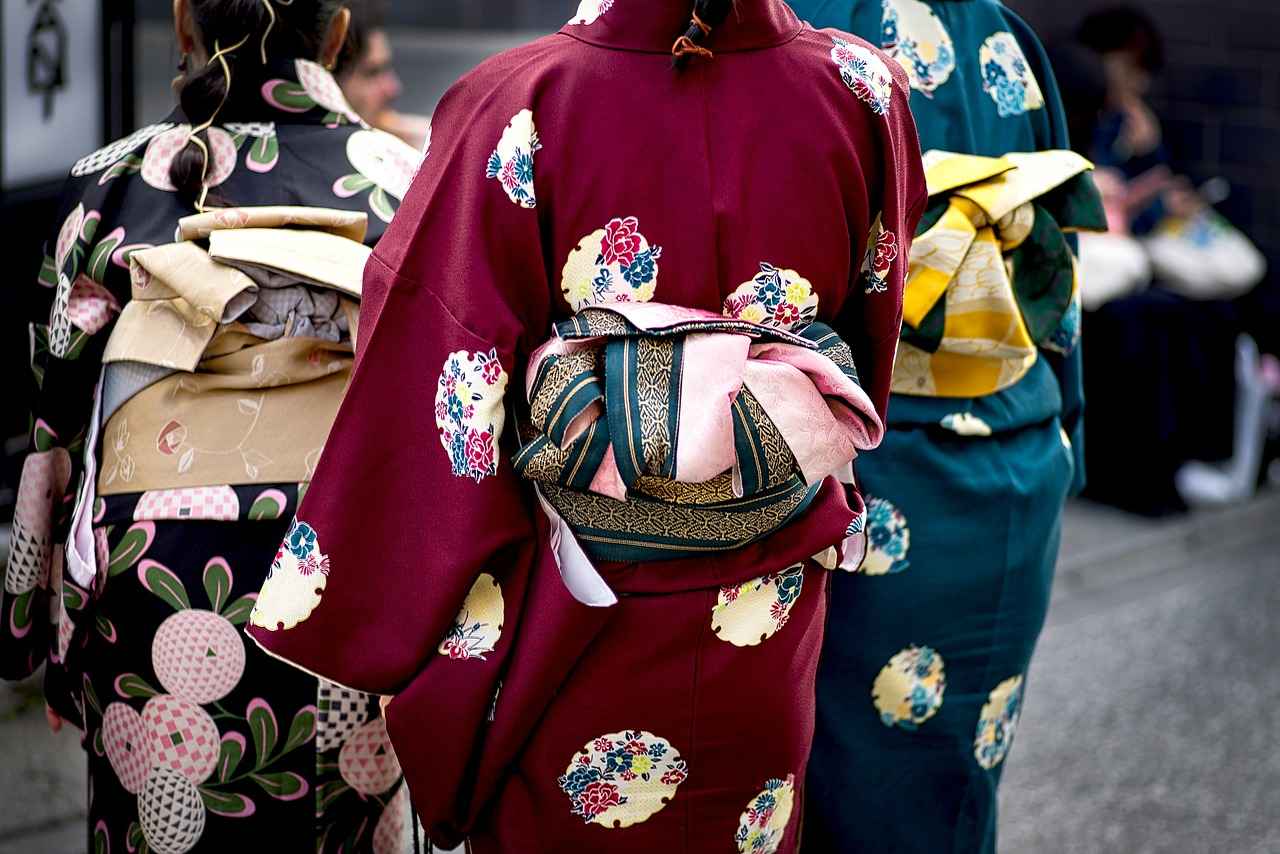
Layering Techniques
Layering can significantly enhance the depth and style of your kimono outfit, allowing for both creativity and functionality. By combining undergarments and outer garments, you can achieve a polished look that respects traditional aesthetics while also reflecting your personal style.
To start, it’s essential to understand the basics of layering. The key is to choose garments that complement each other in terms of color, texture, and formality. Here are some effective layering techniques:
- Undergarments: Begin with a well-fitted kimono undergarment, known as the juban. This piece not only provides comfort but also helps maintain the shape of your kimono. Choose a juban in a color that contrasts with your outer kimono to create visual interest.
- Outer Garments: Consider adding a haori, a traditional kimono jacket, over your main kimono. Haoris are available in various styles and lengths, allowing you to adapt your look to different occasions. A haori can also provide warmth during cooler months.
- Accessories: Incorporate accessories like obi (belts) and obijime (decorative cords) to add layers of texture and color. Experimenting with different obi styles can dramatically alter the overall appearance of your outfit.
- Footwear: The right shoes can complete your layered look. Traditional footwear like geta or zori can enhance the elegance of your kimono while providing comfort.
When layering, it’s also crucial to consider the season and occasion. Lighter fabrics are ideal for summer, while heavier layers can be used in the winter months. By thoughtfully combining pieces, you can create a versatile wardrobe that transitions seamlessly between different settings.
In conclusion, mastering the art of layering not only adds depth to your kimono outfit but also allows you to express your individuality. By following these techniques, you can achieve a sophisticated and stylish look that pays homage to the rich traditions of Japanese culture.

Understanding Kimono Etiquette
Wearing a kimono is not just about donning a beautiful garment; it is also about respecting the rich traditions and customs associated with this iconic piece of Japanese culture. Understanding kimono etiquette is essential for anyone wishing to wear one, especially in a culturally significant place like Kyoto. Here are some dos and don’ts to guide you through the process.
- Do choose the right kimono for the occasion. Different styles, such as furisode and tomesode, are suited for various events. Make sure you know what is appropriate for the setting.
- Don’t wear a kimono casually if it is not intended for everyday wear. Respect the formality of the garment and the cultural significance it holds.
- Do ensure the kimono fits well. A well-fitted kimono not only looks better but also reflects your respect for the tradition.
- Don’t forget to accessorize appropriately. The obi (belt) is a crucial part of kimono attire, and wearing it correctly is essential to complete your look.
- Do pay attention to how you walk and move while wearing a kimono. It is customary to walk gracefully and avoid sudden movements that could disrupt the fabric.
- Don’t wear shoes that clash with your kimono. Traditional footwear like geta or zori is recommended to maintain the overall aesthetic.
- Do follow the local customs and practices when wearing a kimono. For instance, bowing when greeting someone is a sign of respect.
- Don’t forget to ask for help if you are unsure about how to wear or style your kimono. Many rental shops offer guidance to ensure you look your best.
By following these simple guidelines, you can enjoy the beauty of wearing a kimono while showing respect for Japanese culture. Embrace the experience fully, and you will find that wearing a kimono is not just about fashion, but also about connection and appreciation.

Best Times to Wear a Kimono in Kyoto
Experiencing Kyoto in a kimono is not just about wearing a beautiful garment; it’s about immersing yourself in the rich tapestry of Japanese culture. Timing your kimono experience can significantly enhance your trip, allowing you to enjoy the city’s stunning scenery and vibrant events. Here, we explore the best seasons and events in Kyoto to wear your kimono, ensuring you make the most of this unique experience.
- Spring (March to May): This season is famous for cherry blossoms, making it an ideal time to wear a kimono. The Hanami (flower viewing) parties are popular, and parks like Maruyama Park are filled with people dressed in traditional attire, creating a picturesque setting.
- Summer (June to August): While summer can be hot, wearing a yukata (a casual summer kimono) is perfect for festivals, such as the Gion Matsuri. The vibrant colors of yukata complement the festive atmosphere, making it a wonderful choice for evening events.
- Autumn (September to November): As the leaves change color, Kyoto transforms into a breathtaking landscape. This is another fantastic time to wear a kimono, especially during the Jidai Matsuri (Festival of Ages) in October, where you can witness a parade of historical costumes.
- Winter (December to February): Although colder, winter kimonos made from warmer fabrics can be stunning against the snowy backdrop. Special events like Kyo no Yuki Matsuri (Kyoto Snow Festival) provide a unique opportunity to wear a kimono while enjoying the serene beauty of winter in Kyoto.
Wearing a kimono during these seasons not only enhances your experience but also allows you to participate in the local culture. Make sure to check local event calendars for specific dates and plan your kimono rental or purchase accordingly. Embrace the elegance and tradition of kimono attire as you explore the enchanting city of Kyoto.

Conclusion: Embrace the Kimono Experience
Wearing a kimono in Kyoto is not just about putting on a beautiful garment; it is an immersive experience that allows you to connect deeply with Japanese culture. The kimono is a symbol of tradition, elegance, and artistry, and embracing this attire can significantly enhance your visit to this historic city.
When you don a kimono, you are stepping into a world where every detail matters. From the intricate patterns to the way the fabric flows, a kimono tells a story of its own. In Kyoto, you will find a variety of kimonos that reflect the rich history and craftsmanship of Japanese textiles. Whether you choose a silk kimono for a special occasion or a more casual cotton version for a day of sightseeing, each piece is a testament to the artistry involved in its creation.
Wearing a kimono also offers a unique opportunity to participate in traditional customs. As you stroll through the stunning streets of Kyoto, adorned with temples and cherry blossoms, the experience becomes even more enchanting. The elegance of the kimono complements the beauty of your surroundings, making every moment feel like a scene from a storybook.
Furthermore, engaging with local culture while wearing a kimono can lead to memorable interactions with residents and fellow travelers. It opens doors to conversations about traditions, history, and personal stories, enriching your travel experience. Many rental shops in Kyoto offer not just the attire but also guidance on how to wear it properly, ensuring that you are both stylish and respectful of the culture.
In conclusion, wearing a kimono in Kyoto is a beautiful way to engage with Japanese culture. It is an experience that combines elegance, tradition, and personal connection. So, embrace the opportunity, immerse yourself in this rich culture, and enjoy the elegance of this traditional attire.
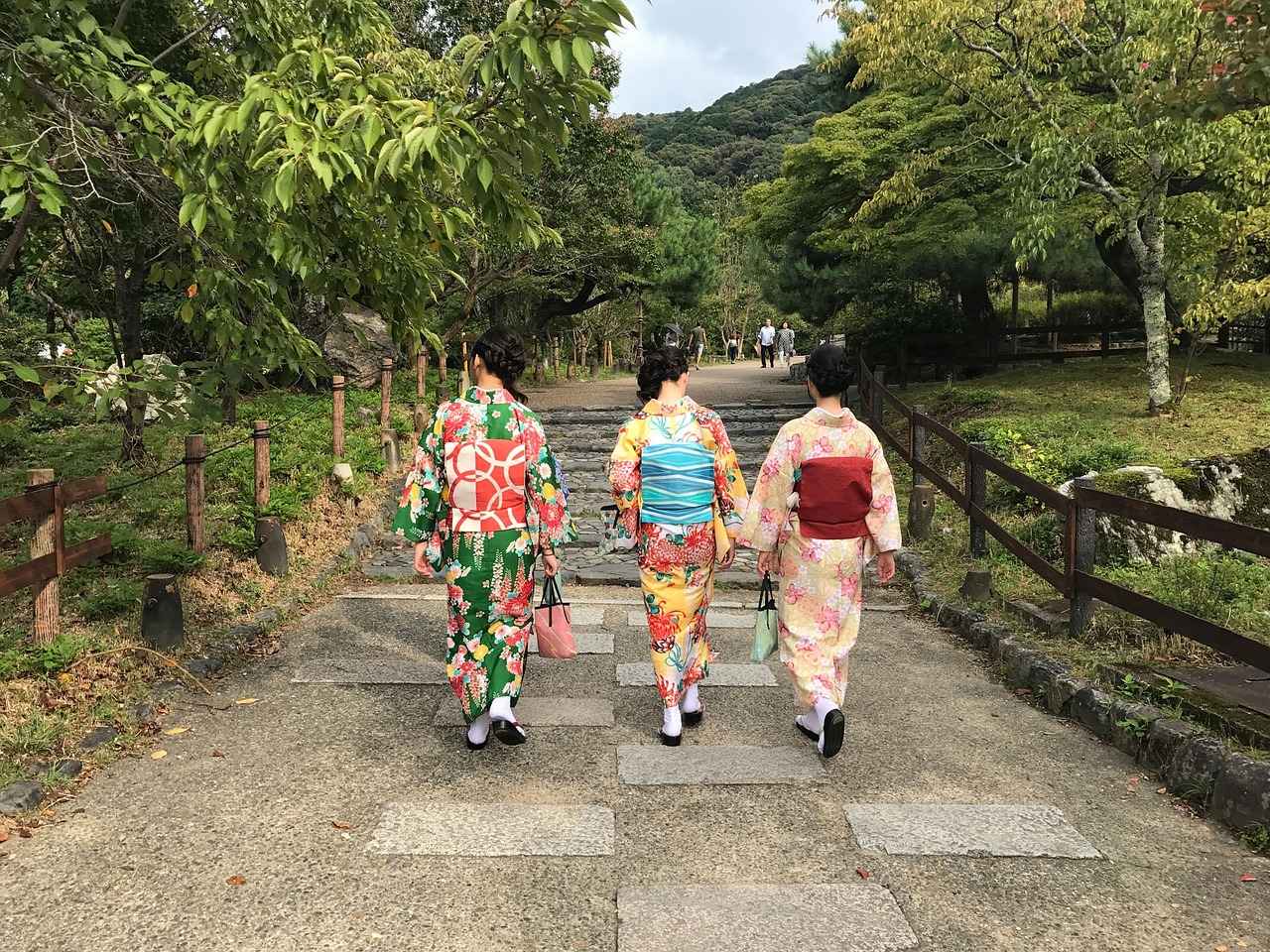
Frequently Asked Questions
- What is the significance of wearing a kimono in Kyoto?
Wearing a kimono in Kyoto is more than just a fashion statement; it’s a way to connect with Japanese culture and history. Kimonos are traditional garments that reflect the beauty and elegance of Japan’s heritage, making your experience in Kyoto even more special.
- Can I rent a kimono in Kyoto?
Absolutely! Kyoto is filled with rental shops that offer a variety of kimonos to suit your style and occasion. Renting a kimono allows you to enjoy this beautiful attire without the commitment of purchasing one, making it a perfect option for tourists.
- What should I consider when choosing a kimono?
When selecting a kimono, consider the fabric, style, and occasion. Silk kimonos are great for special events, while cotton kimonos are perfect for casual outings. Additionally, think about the colors and patterns that resonate with your personal style!
- Are there any specific etiquette rules to follow while wearing a kimono?
Yes, there are some important etiquette guidelines to keep in mind. For instance, always wear your kimono left side over right, and be mindful of how you sit and walk, as kimonos can be quite delicate. Respecting these traditions enhances your experience and shows appreciation for the culture.
- What accessories should I wear with my kimono?
Accessorizing is key! The obi (belt) is essential, and you can choose from various styles. Footwear like zori or geta also adds to the traditional look. Don’t forget about hair accessories, as they can elevate your outfit and showcase your personality!
